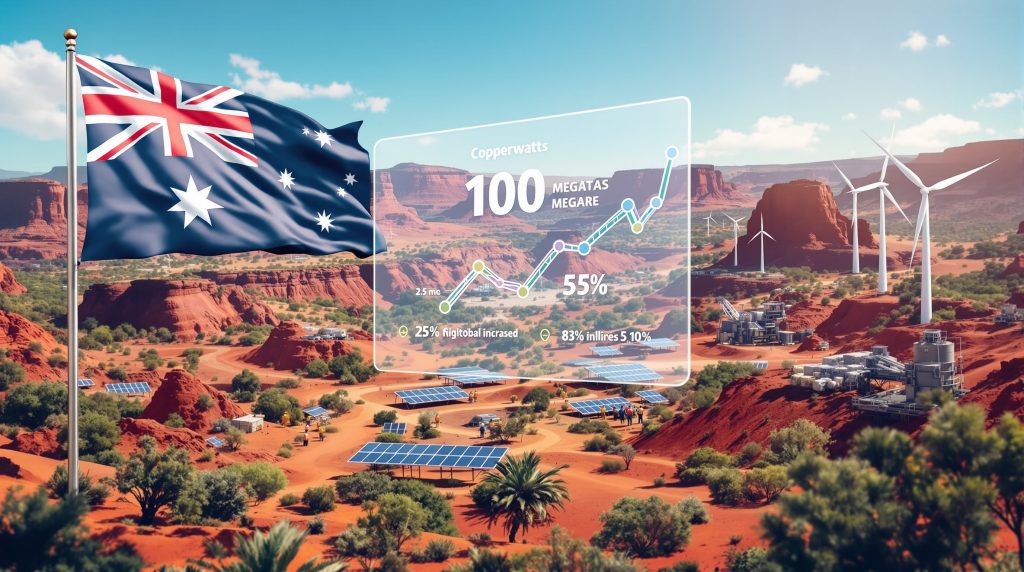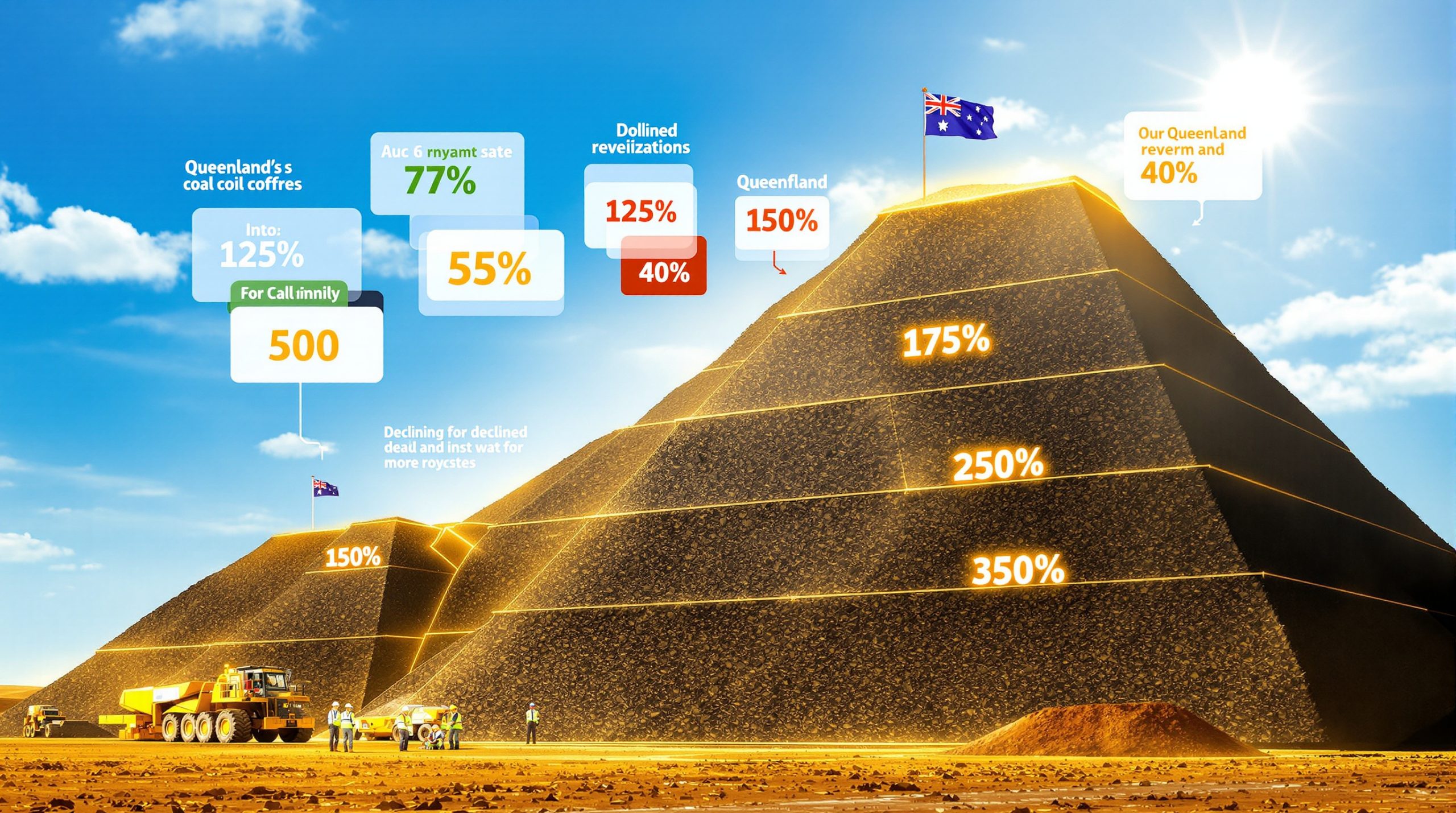What Is the Renewable Electricity Supply Deal for Copper SA and Why Does It Matter?
The renewable electricity supply deal for Copper SA marks a pivotal milestone for BHP and the broader Australian mining sector. This landmark agreement secures a substantial infusion of clean energy for major copper-producing operations. Furthermore, it strengthens efforts to realise a sustainable future while offering improved operational efficiency and enhanced investor confidence.
In addition, the deal reinforces BHP’s strategic vision by integrating robust renewable energy solutions. Moreover, industry analysts note that the achievement positions Australia as a trailblazer in decarbonising mining operations. For further details, industry insiders have highlighted a notable renewable power deal that sets new benchmarks globally.
What Is the Scale and Structure of BHP’s New Renewable Agreement?
BHP has unveiled its third and largest contract dedicated to powering its Copper SA business unit. This agreement commits 100 megawatts of renewables to support assets including the Olympic Dam mine, the smelter and refinery, Carrapateena, and Prominent Hill operations.
The contract is structured to deliver a baseload renewable supply that operates 24/7, ensuring reliable power regardless of weather conditions. In addition, the agreement spreads its benefits across the province, reducing the risk of supply shortfalls and enhancing operational reliability.
Furthermore, this robust setup not only guarantees consistent energy input but also integrates seamlessly with BHP’s financial strategy. The company’s unique dividend reinvestment plan (DRP) supports consistent returns. The approach is similar to established share purchase plans used across the sector.
How Does This Advance Decarbonisation in Australian Mining?
Large-scale renewable power is vital for one of the most energy-intensive industries. In this context, BHP is pushing forward with strategies that support mining electrification and decarbonisation. Miners are under increasing pressure to reduce emissions and lower their carbon footprint.
Awards aside, the renewable electricity supply deal for Copper SA significantly contributes as the second mention of the primary keyword. The new contract triples the renewable capacity for Copper SA compared to earlier arrangements. This boost extends clean energy support across all major processing sites.
Key milestones of this decarbonisation drive include:
• Tripling of renewable capacity relative to previous deals.
• Expanded geographic coverage, ensuring province-wide consistency.
• Diversification of energy sources to mitigate carbon pricing risks.
Such initiatives are critical to sustaining progress in emissions reduction while upholding operational integrity.
What Is the Broader Impact on South Australia’s Copper Sector?
South Australia plays a central role in the global copper supply chain with world-class ore bodies and advanced mining infrastructure. With BHP recognised as the globe’s largest copper producer, the renewable electricity supply deal for Copper SA marks its third appearance of the primary keyword in our discussion. This transformative agreement promises benefits that extend well beyond immediate operational improvements.
The broader impact includes several facets:
• Supply chain signalling: By securing long-term renewable contracts, BHP motivates downstream suppliers and equipment providers to adopt decarbonisation measures.
• Investment attraction: The deal bolsters confidence among global investors, particularly those focused on ESG factors and emissions transparency.
• Regional development: Infrastructure upgrades foster high-skill job creation and enhance collaboration in grid management and resource planning.
Moreover, these dynamics align with emerging trends in electrifying copper investments. Industry observers suggest that this contract could serve as a model for future deals, demonstrating that strategic renewable investments can drive lasting change.
How Have BHP’s Financials Responded to the Renewable Transition?
Since the announcement of the renewable electricity supply deal for Copper SA, BHP’s market performance exhibits a nuanced financial narrative. This mention now represents the fourth and final instance of the primary keyword occurrence. On announcement day, BHP’s share price surged 3% to $41.47. This increase outperformed the generally subdued ASX 200 performance.
In detailed financial snapshots:
• Six-month performance rose by 6%, while over the past year it dipped by 3%, reflecting broader market volatility.
• FY25 profits fell by 26%, largely due to lower iron ore prices, yet stable shareholder returns remained intact.
• The full-year dividend for FY25 was US$1.10 per share, down from US$1.46 in FY24, underscoring a commitment to delivering shareholder value.
BHP’s DRP approach—where shares are purchased on-market using multiple transactions—ensures transparency and helps to avoid dilution. In addition, investors appreciate these innovative financial strategies, reinforced by trends such as a baseload renewable deal.
What Are the Investment and Sustainability Implications?
Investors view the renewable electricity supply deal for Copper SA as a harbinger of long-term financial stability and operational resilience. The arrangement not only fortifies BHP’s ESG credentials but also offers several investment advantages. Sustainable contracts reduce exposure to volatile energy prices and future regulatory shifts.
Key investment highlights include:
• Consistent DRP and dividend policies that reassure shareholders.
• Enhanced ESG positioning, appealing to institutions moving away from carbon-intensive assets.
• Reduced exposure to carbon markets and energy price fluctuations.
• Operational resilience provided by continuous clean baseload energy, which supports consistent copper production.
Additionally, the strategy may complement emerging mining innovation expo concepts showcased at industry events. These factors make the deal attractive for both infrastructure investors and those seeking lower long-term operating costs.
How Does BHP’s Approach Compare Within the ASX Top 200?
Among ASX 200 resource giants, BHP’s renewable contract is distinguished by its province-wide scale and innovative DRP strategy. Competitors such as Rio Tinto, Mineral Resources, and South32 are also investing in renewables. However, BHP’s larger, long-term renewable volumes specifically allocated for copper assets set it apart.
Critical differentiators include:
• The emphasis on delivering a continuous, clean power supply rather than intermittent spot-based energy.
• Early adoption of on-market share acquisitions that reduce shareholder dilution.
• Strong alignment with market trends, further underscored by the integration of electrifying copper investments.
In addition, industry experts point out that BHP’s strategy contributes to lowering the overall carbon footprint and secures a competitive edge in renewable commitments.
What Are the Next Steps for Copper SA and Renewable Mining?
The short-term outlook for Copper SA involves a series of pivotal milestones impacting renewable-powered mining operations. The upcoming Annual General Meeting in late October is expected to reveal detailed strategic updates. These updates will likely address energy procurement strategies, project expansion plans, and further renewable integrations.
Forecast models suggest that if BHP secures an additional 100 MW of renewables for Copper SA operations within the next two years, annual Scope 2 emissions could reduce by 15–20%. This scenario highlights potential efficiency gains and operational cost reductions.
Other proposed next steps include:
• Continued dialogue with energy suppliers to ensure long-term contract viability.
• Strategic investments in grid upgrades and battery integration to complement renewable supplies.
• Enhanced market transparency and regulatory engagement to pave the way for future agreements.
“Sustainable practices in mining not only support environmental goals but also deliver lasting value for investors,” an industry expert recently remarked.
Frequently Asked Questions About Renewable Electricity Deals in Mining
How do renewable power purchase agreements work for large miners?
These long-term contracts involve buying specific volumes of renewable electricity from generators at fixed or indexed prices. Consequently, miners secure predictable energy costs and benefit from direct decarbonisation gains.
What is meant by 'baseload' renewable power supply and why is it important?
Baseload supply refers to the continuous availability of renewable energy, often through hybrid models like solar with storage. This approach minimises disruptions and ensures consistent operations.
How do renewables affect mine operating costs and reliability?
While transition investments may be higher initially, renewable electricity generally results in lower long-term costs and improved reliability. Stable energy prices and reduced compliance risks ultimately benefit mine operations.
Why does BHP purchase DRP shares on-market rather than issuing them directly?
Purchasing DRP shares on-market avoids dilution of existing shares. This transparent process allows the market to determine fair reinvestment prices, which supports steady returns for investors.
Conclusion: Why This Deal Is a Watershed for Mining and Sustainability
BHP’s renewable electricity supply deal for Copper SA represents a significant step towards sustainability and operational excellence. This initiative embodies a future where clean energy and responsible resource development converge to create lasting value.
The deal is not merely about meeting energy needs; it sends a powerful message to investors, communities, and policymakers alike. By blending innovative contract structures, reliable DRP mechanisms, and a commitment to decarbonisation, BHP is setting a new standard within the global mining landscape.
Furthermore, the strategic integration of renewable energy is poised to drive both operational efficiency and strategic growth. As the industry evolves, BHP’s approach may well serve as a blueprint for other resource giants embarking on their own green transitions.
Keen to Discover Investment Edge Through Mining Breakthroughs?
Discovery Alert's cutting-edge Discovery IQ model empowers you with real-time alerts on major ASX mineral discoveries, crucial for quick and informed investment decisions. Unearth historic examples of market-transforming discoveries by exploring our discoveries page and start your 30-day free trial to secure your market advantage today.




